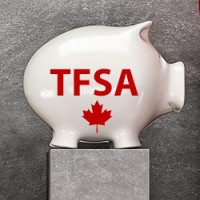Last updated: September 04 2019
Are You Using Your TFSA as a Savings Account? Bad Idea

Christine Steendam & Walter Harder
Imagine a completely tax-free retirement; one in which you don't have to focus on planning for after-tax income at all. This is an opportunity that is being missed by millennials when a TFSA is used as a short-term savings account rather than for long-term wealth accumulation.
Although the accessibility of the TFSA means it can work well for holding everyday savings and emergency funds, the true power of the TFSA comes into play when it’s used for long-term retirement savings. Unfortunately, close to half of Canadians are missing this message. Advisor’s Edge reported on a recent Ipsos survey conducted for RBC found that while 74% of Canadians understand TFSAs can contain cash or investments, 43% are ‘misinformed’ about their real power and purpose in wealth building opportunities. Instead, they believe TFSAs are for savings rather than for growing money.
We had our research department run some numbers to demonstrate the cost of missing this opportunity, and here’s what was found:
a. Millionaire status is possible. If one were to deposit $6,000 annually at the beginning of the year, indexed by 2%, with 5% annual return, the ending balance after 40 years is $1,014,709. To put that in perspective, that would be equivalent of $459,552 in real dollars terms if inflation remains at 2% annually over that period.
b. Size of Pension Benefits. That’s enough to fund a 20-year pension starting at about $65,900 indexed at 2%. In today’s dollars, that’s $29,800 a year of tax-free income for retirement. Add in CPP and OAS—which will not be subject to clawbacks from TFSA income—and investors have a decent retirement with little or no taxes at all. For a couple, it would create quite a  comfortable lifestyle if both spouses had the same income.
comfortable lifestyle if both spouses had the same income.
c. Not a replacement for RRSPs. It’s also important to consider that the RRSP has long been the favourite for retirement savings and it’s important to view the TFSA not as a replacement to the RRSP, but as another tool in your wealth accumulation toolbox.
The immediate benefits, plus the added benefits of the Home Buyers and Lifelong Learning Plans, make the RRSP a powerful option for reaching long-term savings goals. Consider the following:
As a general rule, for higher-earning employees, unused RRSP contribution room should be used first. Contributions to an RRSP provide tax-deferral and reduce taxable income which will, in turn, contribute to larger CCB payments as well as less taxes payable and a potential tax return—a tax return that could then be contributed to a TFSA. Remember though, that RRSPs are only tax-efficient if the tax rate applicable to the contribution year is higher than the tax rate applicable to the withdrawal year, taking into account factors like CCB and OAS clawbacks.
Taxes are some of the biggest wealth eroders, but when Canadians use the TFSA in tandem with an RRSP, they maximize on tax deferral today and a tax-free income for the next stage in life: retirement.
Additional Educational Resources: the calculations in this article were done using Knowledge Bureau Calculators , a collection of 15 different calculators that you can add to your Client Relationship Toolkit. Take a risk-free trial today.
COPYRIGHT OWNED BY KNOWLEDGE BUREAU INC., 2019.
UNAUTHORIZED REPRODUCTION, IN WHOLE OR IN PART, IS PROHIBITED.
